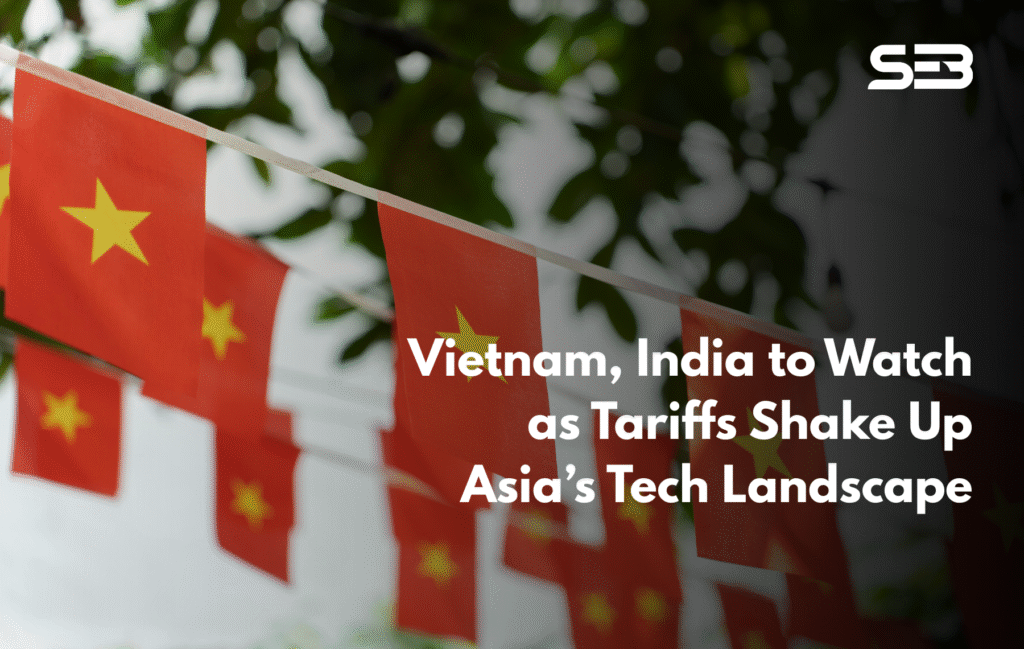As U.S. tariffs surge across Asia, Vietnam and India emerge as the pivotal nations in tech manufacturing and investment. According to S&P Global Ratings, while several Asia-Pacific economies face steep risks, India and Japan stand out for their domestic resilience, offering buffers against U.S. trade pressures
Why Tariffs Matter to Tech Supply Chains
- Apple, Intel, Nike rely heavily on Vietnam, for example: the country produces half of Nike’s footwear and hopes to make two-thirds of Apple’s AirPods by year‑end.
- However, looming U.S. tariffs—up to 46% on Vietnamese exports—are prompting multinational firms to rethink their “China‑plus‑one” strategies.
- As tariffs are paused pending negotiations, investor sentiment remains fragile—affecting stocks across Asia.
Why Vietnam Is So Vulnerable
- 12% of GDP depends on U.S. demand; semiconductors alone account for $21+ billion revenue in 2025.
- A 46% tariff could significantly reduce Vietnam’s export competitiveness, prompting firms like Luxshare to consider relocating operations.
- The result? Economic uncertainty, market drops (stocks fell 6.2% after the tariff news), and caution overriding expansion .

Why India Has a Competitive Edge
- India’s 27% tariff on electronics is more favorable compared to China’s 34% and Vietnam’s 46% tariffs.
- According to CLSA and ICEA, this makes India a stronger, more cost-competitive electronics exporter.
- Apple, Samsung, Dixon Technologies, and Foxconn are already boosting operations in India—spurring growth in exports and capacity.
Economic Outlook: Forecasts and Risks
- S&P warns that Asia-Pacific GDP growth could drop by 0.2–0.4 ppts over the next two years if tariffs resume.
- India, despite its comparative advantage, still faces vulnerability—an unexpected tariff hike could shave projected growth from 6.5% to 6.3% .
- Other nations like South Korea and Thailand remain heavily exposed due to export dependency.
What This Means for Global Tech
- Reshoring Moves
- U.S. firms may shift manufacturing to India to avoid tariffs and benefit from the PLI scheme and Make in India incentives.
- U.S. firms may shift manufacturing to India to avoid tariffs and benefit from the PLI scheme and Make in India incentives.
- Diversified Supply Chains
- Expect supply chain disruption as companies rebalance across India, Vietnam, Mexico, Thailand, and Brazil .
- Expect supply chain disruption as companies rebalance across India, Vietnam, Mexico, Thailand, and Brazil .
- Investor Sentiment Swings
- Investments are reallocating: India saw inflows of $2.34 billion in May, its highest in months.
- Meanwhile, Vietnam’s gains could falter if U.S. tariffs remain in play.
- Investments are reallocating: India saw inflows of $2.34 billion in May, its highest in months.
So, Should You Watch India or Vietnam?
| ✅ India | ❌ Vietnam |
| Better tariff protection | Higher tariff risk |
| Diverse domestic market | Export-heavy reliance |
| Strong manufacturing support | Supply chain vulnerability |
India offers a stable, incentivized environment for tech firms expanding globally.- Vietnam remains competitive—but its future hinges on U.S.-Vietnam trade negotiations by early July.
Final Takeaway
Tariffs aren’t just taxes—they’re political levers affecting global tech strategy.
- Vietnam is at risk—and could lose footing fast.
- India, with supportive policies and lower tariffs, could emerge as Asia’s new tech hub.
- Smart investors, manufacturers, and policymakers should focus their strategies on India’s potential for resilience and growth.




